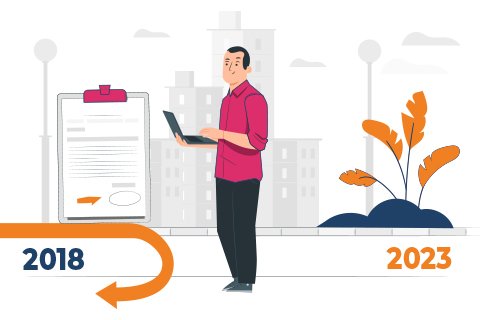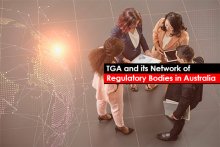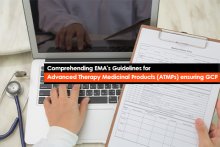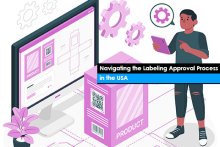The life sciences industry is ever-changing and evolving. It’s the same in the year 2018. A lot of mandatory changes have been made to the regulations, and a lot of guidance documents have been released pertaining to the best Regulatory practices of consumer healthcare, medical devices, pharmaceuticals, which are expected to impact the industry in a positive way. In brief, Health authorities such as the National Health Surveillance Agency of Brazil (ANVISA) and the Food and Drugs Administration (FDA) have taken effective measures to increase the safety of the products by strengthening the regulations. In addition, authorities such as the China Food and Drug Administration (CFDA) and European Medicines Agency (EMA) have released new guidelines for classification of medical devices to help clarify grey areas.
Throughout the year, keeping abreast with Regulatory market dynamics, we have reported some, if not all, the mandates and updates in our blogs. Now, as 2018 is coming to an end, let’s give you a quick recap of all the Regulatory changes, industry-wise and function-wise that have taken place so far.
Regulatory Intelligence / Affairs
New identities for Health Authorities: From 1st September 2018, the official English name of the State Food and Drug Administration of China has been changed to National Medical Product Administration (NMPA). Additionally, on February 12, 2018 South Africa’s Minister of Health appointed South African Health Products Regulatory Authority (SAHPRA) as its new Regulatory authority.
Pharmaceutical Regulatory Updates 2018 
FDA Released New Guidance Document for Generic Drugs: In 2018, FDA released one revised and one new draft guidance to advance the development of generic transdermal and topical delivery systems (TDS) to align the number of approvals of generic drugs. The drafts states:
- Irritation and sensitization – Applicants are required to perform a comparative assessment of the generic and reference TDS products using an appropriately designed skin I/S study with human subjects.
- Assessing Adhesion – This draft provides manufacturers with a choice of evaluation pathway depending on the objectives of a TDS product development program. The two options are: evaluation of TDS adhesion in clinical studies performed to evaluate TDS adhesion only and evaluation of TDS adhesion in clinical studies performed with a combined purpose.
ISO Revised Implementation Guidelines for ISO 11238: To keep up with the changes taking place as a result of Brexit, ISO updated its ISO/TS 19844, “Implementation guidelines for ISO 11238 for data elements and structures for the unique identification and exchange of regulated information on substances”. The updates comprise of details for agencies and vendors working on the substance repositories on Substance Groups 1 to 3. The details are:
- Data elements necessary for defining Substances and Specified Substances Groups 1 to 3
- The logical use of data elements as defined in ISO 11238
- Substances and Specified Substances Groups 1 to 3 business rules for:
- Determining necessary data element
- Distinguishing and defining materials according to ISO 11238
- Triggering the assignment of identifiers
TGA Approved new Product Information (PI) Form: From 1st January 2018, TGA has approved a new Product Information (PI) form with a transition period of 3 years. The changes were adopted to ensure that critical information is more accessible. These changes include bringing critical information into the light and to align headings and sub-headings with the international standard.
FDA strengthens Pregnancy, Lactation and Labeling Rule (PLLR): USFDA’s regulations for Pregnancy, Lactation and Labeling Rule (PLLR) are into effect since June 2015. But recently, to focus more on the content and format of Physician Labeling Rule (PLR), FDA has updated the guidelines. The changes are made under new subsections: 8.1 Pregnancy, 8.2 Lactation and, 8.3 Females and Males of Reproductive Potential of USE IN SPECIFIC POPULATIONS section of the full prescribing information (FPI).
TGA enforced eCTD V3.1 Module 1 Specification: Therapeutic Goods Administration (TGA) of Australia has rolled out a new mandate to use latest version 3.1 Module 1 Specification for Regulatory submissions post June 30th, 2018.
TGA has initiated accepting submissions adhering to version 3.1 from the day it has come to effect in action i.e., Jan 1st, 2018. And at the same time, the agency has also provided transition time to align with the latest version. Submissions made, based on both versions (3.0 & 3.1) will be accepted until the deadline which is on June 30th, 2018, after which it will be deemed a mandate to adhere to the latest version (3.1).
FDA Made Submission of DMFs In eCTD Format Compulsory: From 5th May 2018, FDA has made it mandatory for manufacturers to submit Drug Master Files (DMFs) in eCTD format. The mandate states:
- All DMFs to be submitted in eCTD format
- Packaging information not included in the DMF
- Type III DMF for confidentiality
- DMFs to be updated annually
United States Pharmacopeia’s latest guidelines on Elemental Impurities: As of 1st January 2018, new applicants submitting NDAs and ANDAs for drug products need to fulfill recommendations as per the guidelines by ICH (International Conference for Harmonization) Q3D imposed by United States Pharmacopeia (USP). The recommendations are:
- All the drug products that are either manufactured or sold must be tested and reported for elemental impurities
- All nutraceutical products must comply with the set limits while identifying various organic and inorganic elements
- They must comply with the permitted daily exposure (PDE) limits for 15 elemental impurities
- They must individually quantify arsenic, cadmium, lead, and mercury
- In case of suspicion, testing for additional toxic metals (even for the ones not included in USP list) must be done
Medical Devices Regulatory Updates 2018 
TGA started accepting electronic submissions for Certificate of Free sale or Export Certificate: In response to the issues faced by the sponsors while notarizing and endorsing certificate of free sale or export certificate, TGA announced that all medical devices are required to submit their application and receive the certificate electronically. The mandate will help the sponsors to meet the needs of the importing country.
Eligibility criteria for the Certificate
- Must be a sponsor of medical device
- Should have an inclusion in ARTG for the kind of medical device in question
- Should be exempted under item 1.2, part 1, schedule 4 of the Therapeutic Goods (Medical Device) Regulations 2002
CFDA released new classification catalog for medical devices: Effective from 1st August 2018, the China Food and Drug Administration - CFDA (currently National Medical Product Administration – NMPA) has released a new mandate which classifies medical devices on the basis of device category and sub-category. The new classification will affect everyone applying for registration of medical devices, be it new applicant, existing manufacturers (in case of renewals) or reclassification. The new catalog suggests the following prime changes:
- Device categories were decreased in number from 43 to 22 which in effect resulted in reduction of percentage of Class III medical devices
- Eliminated duplicates in sub-categories to add clarity
- Included 1,157 sub-categories to improve the ease of classification
- Product description and the intended use are added to the factors taken into consideration while determining the device classification
- The number of device names provided as examples, has been increased from 1,008 to 6,609
- New classification comprises of a 3-level structure which is more logical and aligns close to the clinical practice
EU MDR Timelines Revised: To enhance the compliance standards for device manufacturers and other stakeholders, EU’s new Medical Device Regulations (MDR) - 2017/745-MDR and 2017/746-IVDR came into effect from May 25, 2017. The new regulations consist of 123 articles and 22 rules for classification of device. While the regulations are still in transition, the timeline for the year 2018 are:
- Article 102 of MDR, emphasizing on co-operation between competent authorities, will be enacted from 26 May 2018
- Articles 35-50 are applicable to NBs which have submitted application for authoritative designation from 26 Nov 2017 to 26 May 2020 (no authority after this date)
- All certificates:
- Issued before 26 May 2017 by such NBs will remain valid until expiry date or 26 May 2022, whichever is latest
- Issued on 26 May 2017 by such NBs will remain valid until expiry date or 26 May 2024, whichever is latest
EC updated the classification of borderline medical devices: This year, European Commission released a newly updated manual to help manufacturers classify borderline medical devices and products. This 18th revision of the manual supports case-by-case classification and is aligned with MEDDEV 2.1/3 Rev. 3. The new classification and consideration includes:
- Alum styptic pencils can be classified under Class III medical devices
- Tissue expanders used in the breast cab be classified under Class III
- Dura guard for use with a craniotome can belong to Class III
- Heart bypass machine can also be categorized under Class III
- Liquid nitrogen for cryopreservation of cells and tissues of human origin for medical purpose serves the purpose of Class IIA medical device
Cosmetics Regulatory Updates 2018 
ANVISA Simplified Regulations for Children’s Cosmetics: ANVISA modified resolution RDC 07/2015 to simplify regulations related to children’s cosmetics. The new mandate allows manufacturers to launch a product in the market before it is registered. The main changes in the resolution are:
- Exemption of children’s cosmetics from compulsory registration
- Products such as sunscreens, insect repellants etc. still require registration
- Manufacturers are still required to fulfill the technical requirements of ANVISA under RDC 15/15
ANVISA Regulated Different Label Variations for the Same Product: On 22nd November 2018, ANVISA published a new standard - Resolution RDC 250/2018 related to Cosmetics Labeling in Brazil. The new regulation allows product manufacturers the flexibility to regulate different labeling variations for the same product. With this regulation coming into effect, labeling changes related to only safety and benefits of the product will require submission to the agency.
To conclude, the year 2018 has brought a lot of Regulatory changes that impacted the life sciences industry. And to make the manufacturers and sponsors confident and compliant in taking their products globally, Freyr, as a strategic Regulatory partner, has been successful in educating and assisting the industry through our webinars, blog posts, newsletters, and journal articles. Our recent achievement of surpassing 300+ clients and other acknowledgments stands a testimony to the same.
Considering the pace at which the mandates are changing, we look forward to the updates and guidance documents that are expected to be released in 2019 and for sure will inform you as always for successful compliance. Stay tuned to this space for 2019 and Farther Regulatory updates. Stay informed to stay compliant.





